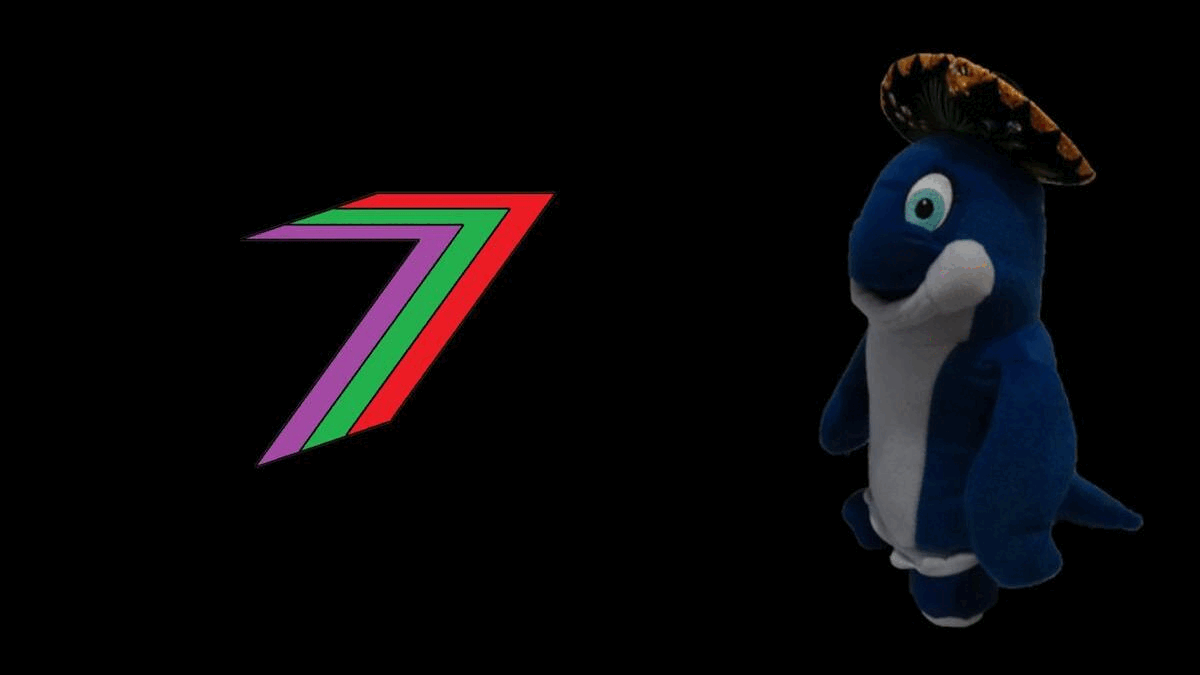Hi Everyone,
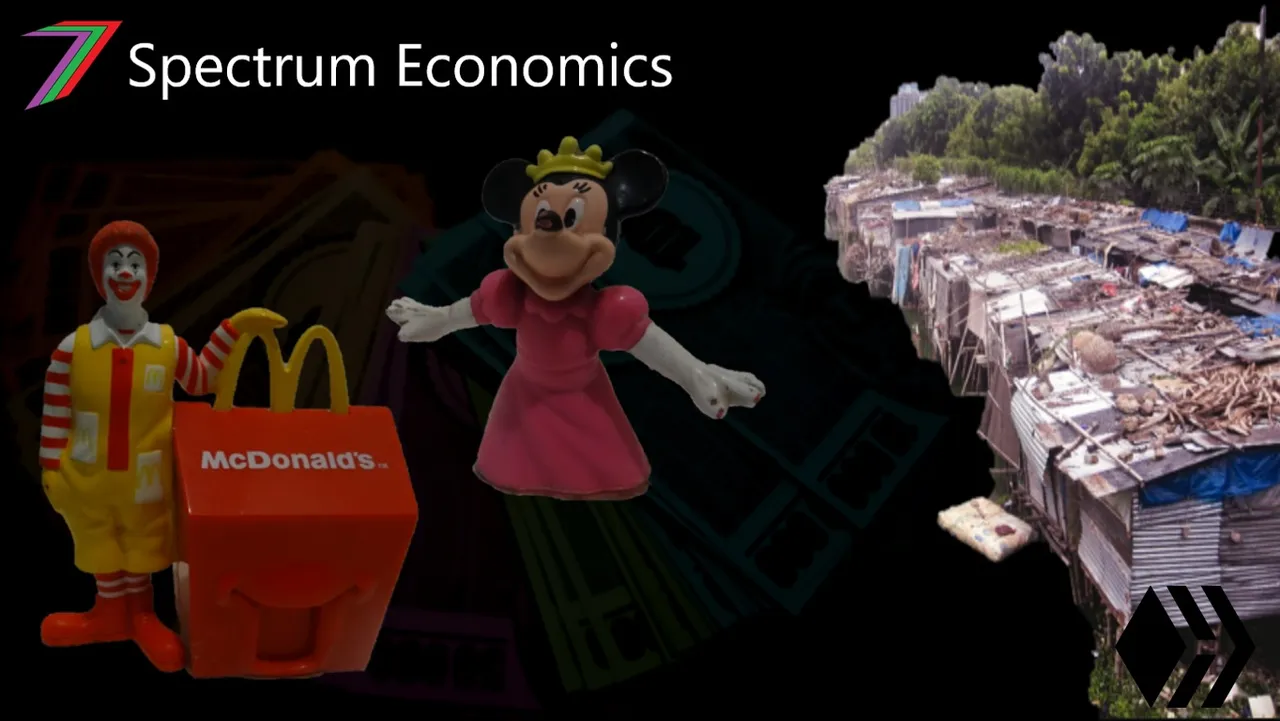
In many of my posts, I am critical of how the Establishment (Government, Big Business, Banks, Religions, and Media) treat the people in western countries (I often focus on Australia, UK, and USA).
- I have criticised their application of democracy (i.e. representative democracy).
- I have criticised their attack on free markets.
- I have criticised their control over information.
- I have criticised their attack on freedom.
- I have criticised their attempts to redistribute income from the working and middle classes to the top 0.01% of the population.
- I have criticised how they have attempted to divide their own countries to suit their own needs.
Despite, being subject to various forms of abuse from the Establishment, people in western countries have the highest incomes (Median Income World Population Review), the highest standard of living (Human Development Index World Population Review) and highest overall happiness in the world (World Happiness Report World Population Review). So, what must it by like for the poorest countries with the lowest standard of living?
Median Income
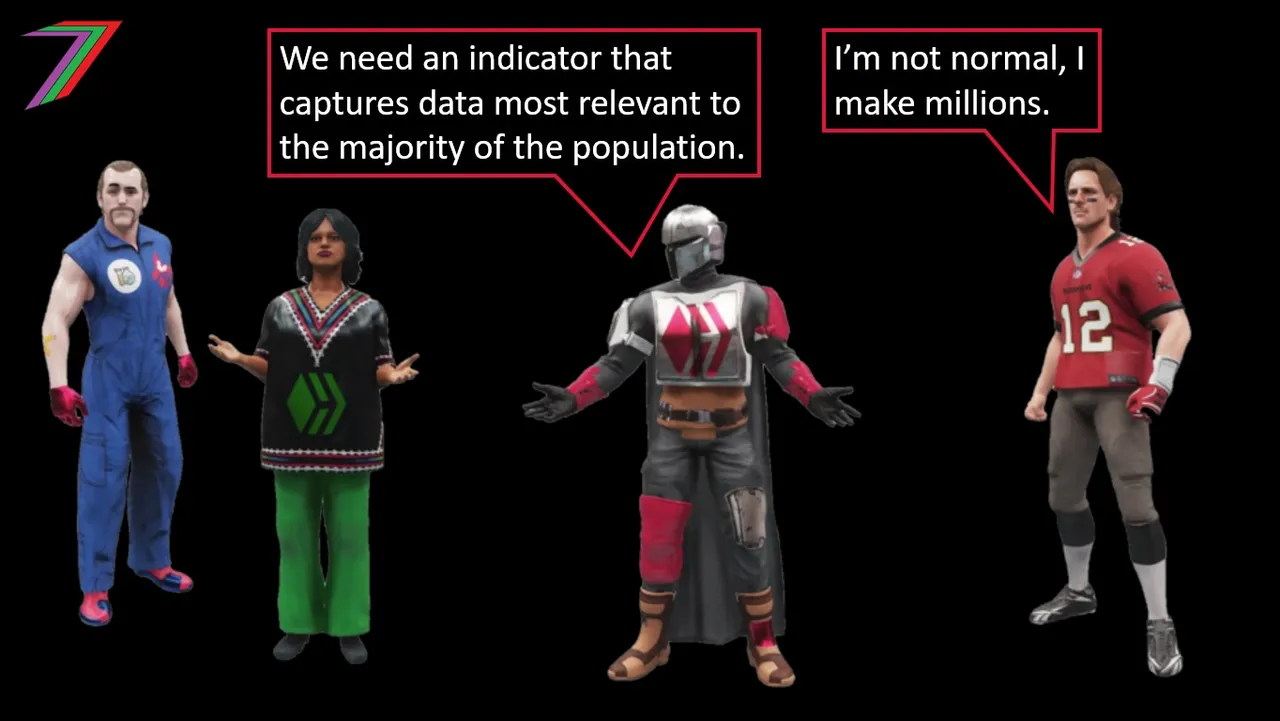
First, we need to establish, which countries are, or close to being, the poorest in the world. There are numerous possible indicators we could use (e.g. real GDP per capita, mean wages, and standard of living indices). For this post, for simplicity, I have used median income. It is more representative of the general population (e.g. excludes the richest and poorest of the population included in the mean and per capita figures). It is less sophisticated and subjective than standard of living and happiness indices. Data is more likely to be reliable and recent, as less rigorous data collection is required.
Median income may not provide us with a definitive list of the poorest countries in the world (e.g. does not directly include poverty from mass unemployment) but any country found towards the bottom of this list have a population of people that are earning significantly below the world average.
In this post, based on 2021 data sourced by World Population Review, I investigate the twelve countries with the lowest reported median incomes in the world. Table 1 contains these 12 countries and their median incomes.
Table 1: Twelve Poorest Countries in the World based on Median Incomes
| Rank | Country | Median (PPP $) |
|---|---|---|
| 1 | Congo, D.R. | 395 |
| 2 | Madagascar | 398 |
| 3 | Burundi | 475 |
| 4 | Malawi | 484 |
| 5 | Guinea-Bissau | 486 |
| 6 | Central African Republic | 491 |
| 7 | Mozambique | 529 |
| 8 | Zambia | 545 |
| 9 | Uzbekistan | 591 |
| 10 | Rwanda | 621 |
| 11 | Angola | 665 |
| 12 | Togo | 683 |
Source: World Population Review
Why are they poor?
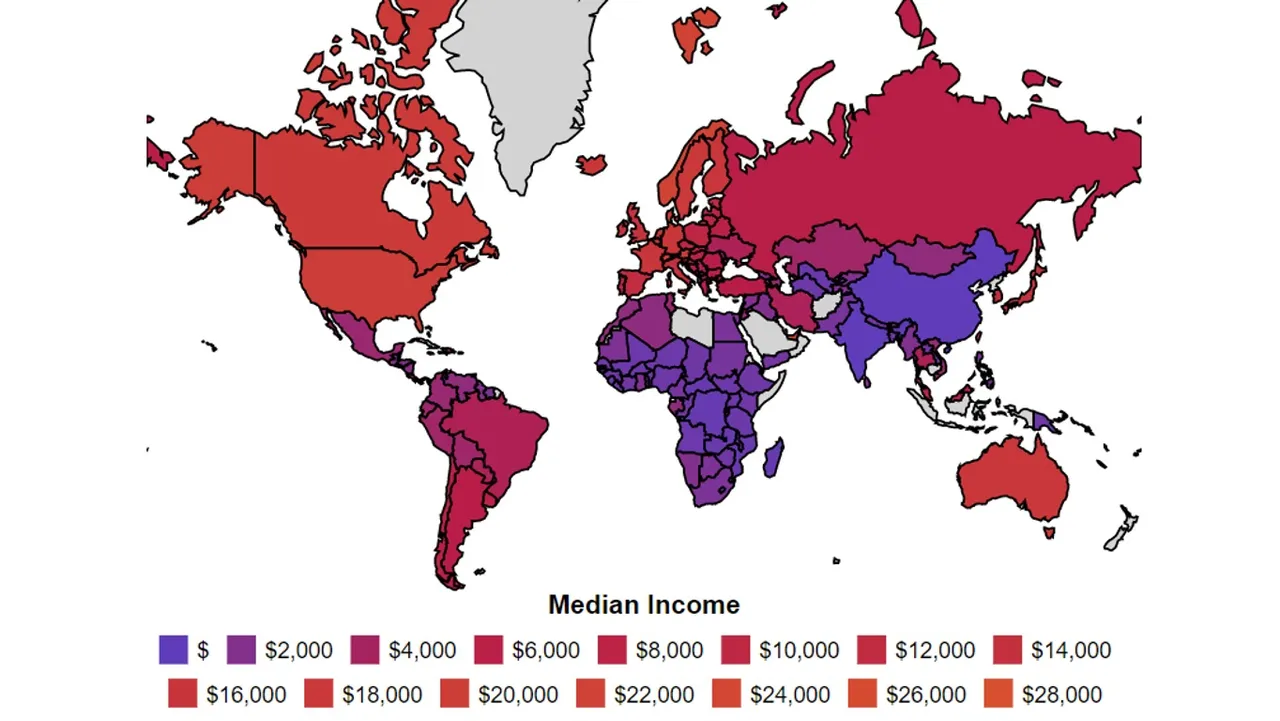
Source: World Population Review
What determines the wealth of a nation? We could argue there are many determinates of wealth. In this post, I will discuss the following determinants and apply them to the twelve selected countries.
- Type of leadership and governance
- Trade (both domestic and international)
- Size of the country
- Geographical location
- Natural resources
- Culture and Religion
- History
Leadership
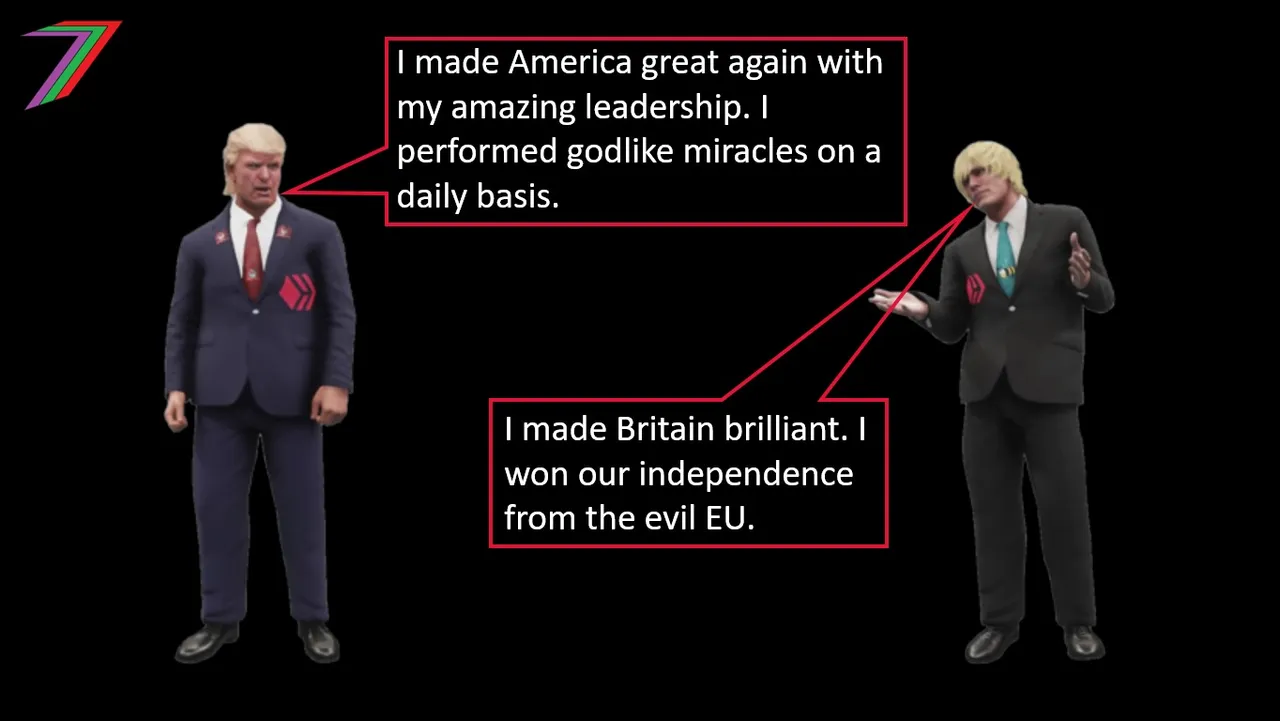
Type of leadership and governance plays an important role in determining a nation’s wealth. How are decisions made and who makes them? Do the leaders of a country work for the people, themselves, or a small group of influential people? Bad leadership structures are likely to have most or all of the following characteristics.
- High concentrations of power
- Lack of opposition
- Lack of scrutiny
- Lack of transparency
- Lack of accountability
- Lack of consent
- Lack of input, feedback, debate and consultation with the public
Bad leadership structures are likely to attract power and/or wealth seeking leaders. They are unlikely to care for the public. They are likely to impose their will on the people. They are likely to sacrifice the people’s welfare for their own gain (i.e. power and/or profit). They may also attract violent opposition that will destabilise the country.
All twelve countries claim to be or are claimed to be Presidential Republics. They have elections for their Governments and their presidents. However, it is unlikely that these countries have functioning democracies. For about half these countries, there is only one viable candidate (one choice is no choice). According to the Economist Intelligence Unit, at best, some of these countries have partially functioning Governments and others barely function at all. See Figure 1 for a map of Africa.
Figure 1: Functioning Government (2021)
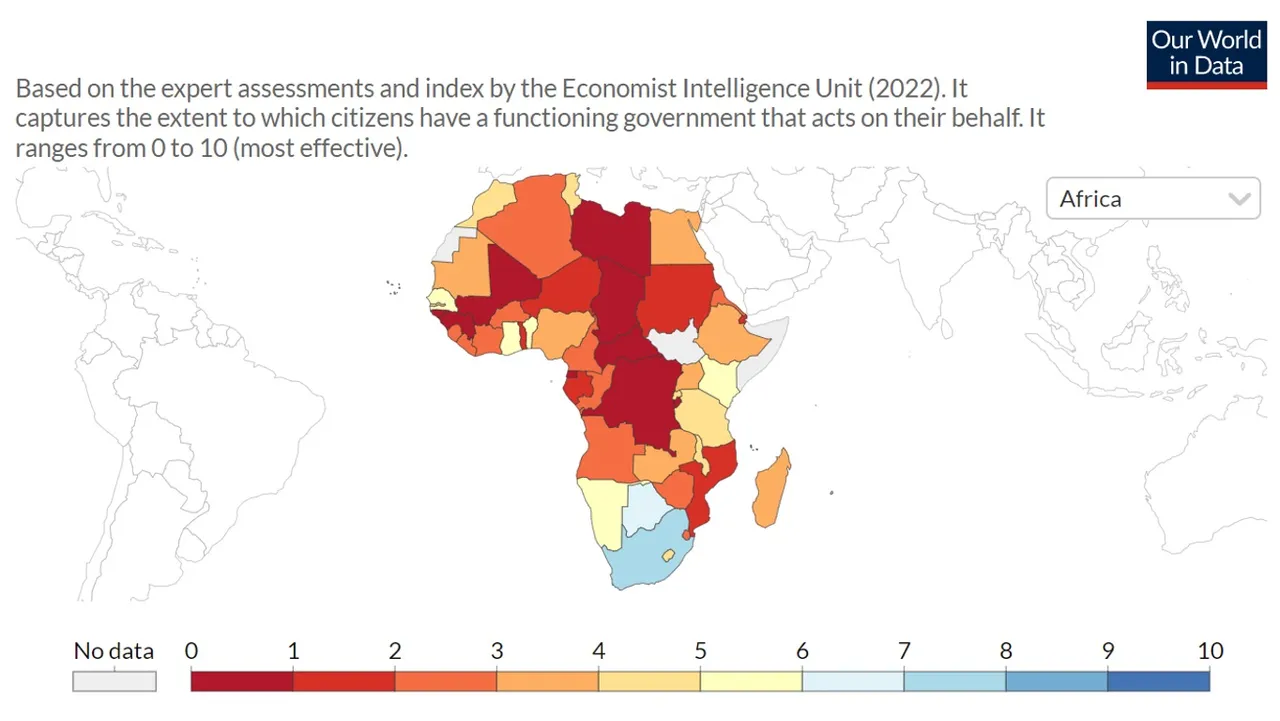
Source: Our World in Data
African countries are also prone to coups. Out of the 54 countries on the continent of Africa, 45 have had at least one coup since 1950 (VOA). Guinea Bissau, Burundi, and Togo have been prone to coups. The 1994 genocide in Rwanda was one of the most horrific in history. Approximately 60% of 70% of the Tutsis population was killed, which was about 7% of the population. Genocide has also occurred in Burundi (1972) and in Congo, Democratic Republic (2002 and 2003) (Wikipedia).
Trade

Trade is the core and essence of wealth creation. Trade begins locally, expands nationally, and eventually internationally. There needs to be a balance between specialisation for efficiency gains (trade based on comparative advantage) as well as diversity to prevent overdependence and vulnerabilities in the economy. The economy becomes vulnerable if it becomes overly dependent on providing just a few goods and services and if it is overly dependent on just a few trading partners. Relying on a few goods and services makes an economy vulnerable to both demand (e.g. rapid fall in demand) and supply (e.g. rapid increase in costs) shocks. Relying on a few trading partners makes a country vulnerable to the trading partner’s circumstances and demands (e.g. a country may demand changes to a labour law or they will trade with another country).
Trade can be hindered by Government intervention and actions. Governments can restrict domestic trade through laws, regulations, or direct participation. They can restrict international trade through trade barriers such as tariffs, quotas, and regulation. Governments can hinder trade through actions that are deemed unfavourable by other countries (e.g. war and corruption).
Economic Activity
Low incomes (i.e. median) is a strong indication that the twelve selected countries are not preforming well economically. There are many other indicators of economic performance and activity. These include inflation and unemployment. Table 2 includes inflation and unemployment as well the adult employment rate and the average working hours.
Table 2: Economic Indicators
| Country | Inflation | Unemployment | Employment Rate | Working Hours |
|---|---|---|---|---|
| Congo, D.R. | 2.7% | 5.4% | 66.7% | 45 |
| Madagascar | 4.2% | 2.6% | 83.3% | 40 |
| Burundi | 8.4% | 1.8% | 84.2% | 40 |
| Malawi | 8.6% | 7.0% | 72.1% | 48 |
| Guinea-Bissau | 0.2% | 6.8% | 66.9% | 45 |
| Central African Republic | 4.3% | 6.6% | 72.6% | 52 |
| Mozambique | 3.1% | 4.0% | 77.9% | 40 |
| Zambia | 22.0% | 13.0% | 61.2% | 48 |
| Uzbekistan | NV | 7.2% | 57.5% | 40 |
| Rwanda | -0.4% | 1.6% | 80.3% | 45 |
| Angola | 17.1% | 8.5% | NV | 44 |
| Togo | 1.8% | 4.0% | 64.6% | 40 |
Sources: Inflation (World Bank), Unemployment (Our World in Data), Employment Rate (World Bank), and Weekly Working Hours (Nation Master)
Notes: NV means data is not available. Data is from 2020 and 2021. Working hours data is approximately ten years old.
For most of the countries, inflation is relatively manageable (eight of twelve countries have inflation rates below 5%). Unemployment is also relatively low for most of the countries (ten of twelve countries have unemployment below 8%).
The average weekly working hours for adults of these countries is 40 hours or higher. The average for most European countries is below 40 hours with Greece the highest with 42.3 hours (World Economic Forum). The percentage of adults working in these countries is high; they all have a higher percentage than the average of EU countries which is 57%. They even have a higher percentage of females working than the average of the EU countries; see Figure 2.
Figure 2: Female employment to population ratio
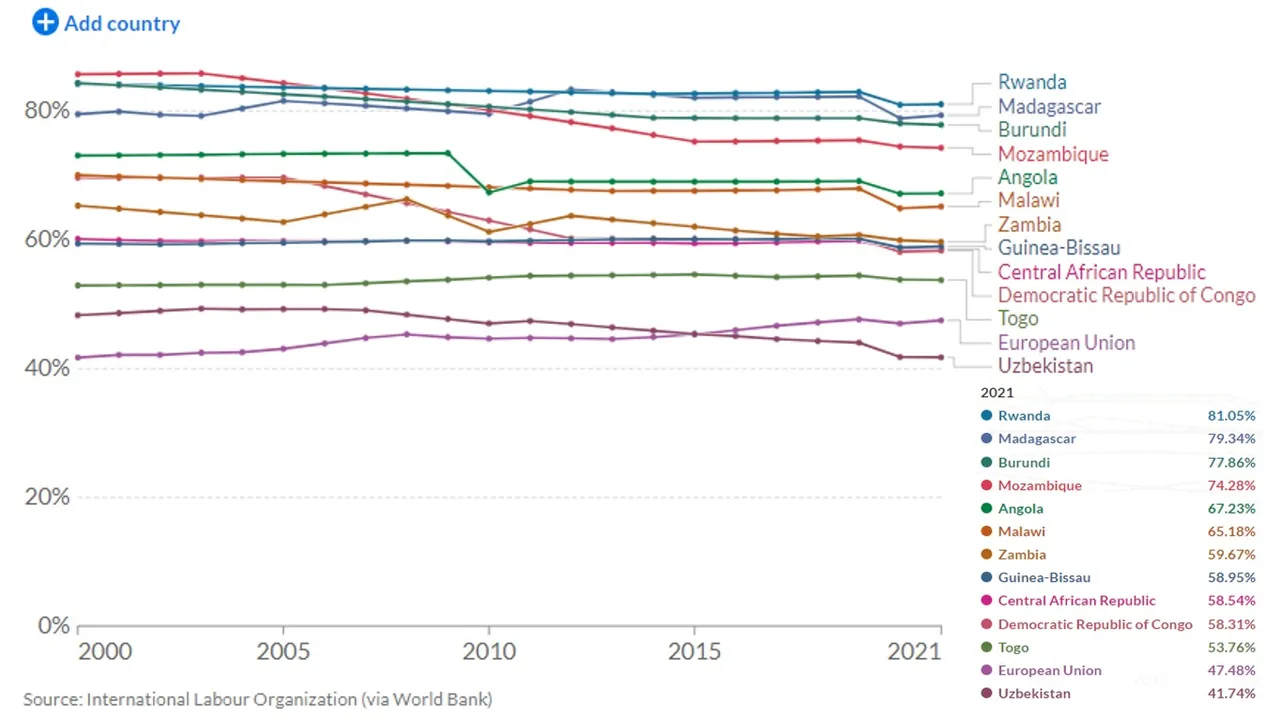
Source: Our World in Data
The economic indicators suggest that the majority of the people in the poorest countries work longer than people in the wealthiest countries. Yet, they also earn the lowest annual incomes. The low incomes are not caused by lack of economic activity but likely the type of economic activity and how this activity is organised.
External Trade (Export focused)
What goods and services do these twelve countries produce and export? Who are their trade partners? The following twelve figures contain each country’s exports and the countries that are buying the most from them; data is for 2020.
Figure 3: Congo, Democratic Republic Exports
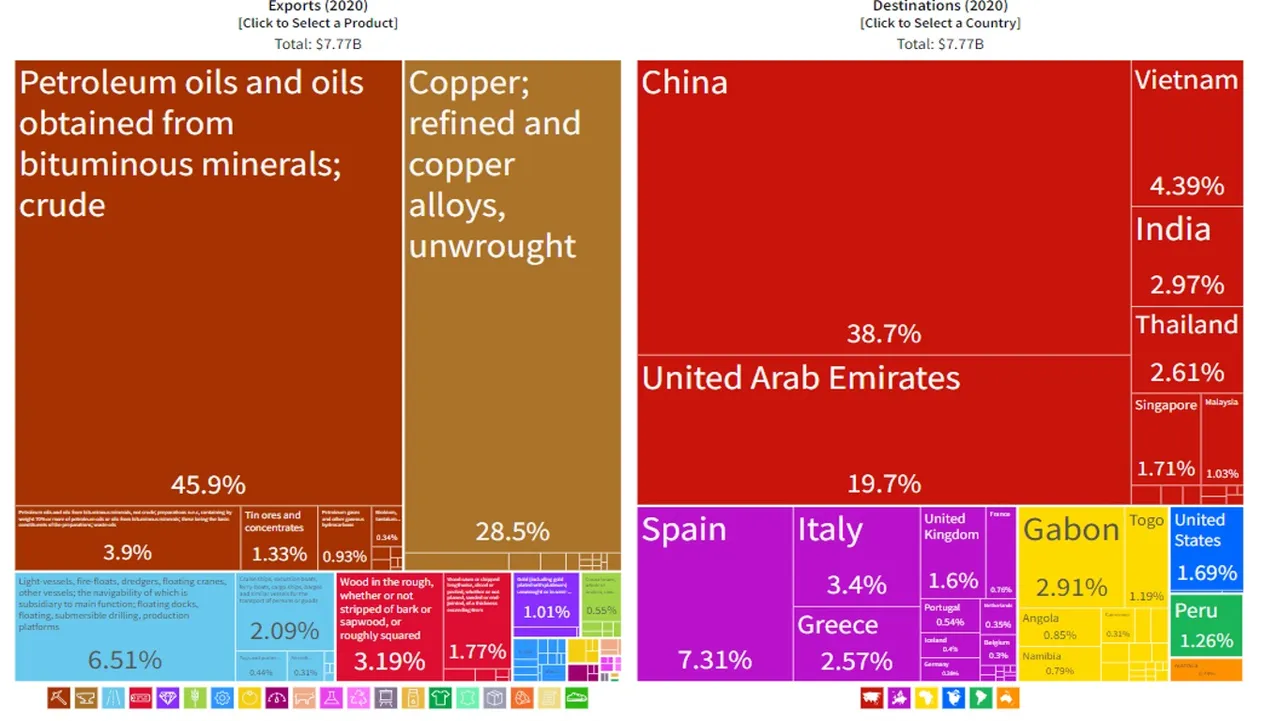
Source: OEC World
Figure 4: Madagascar Exports
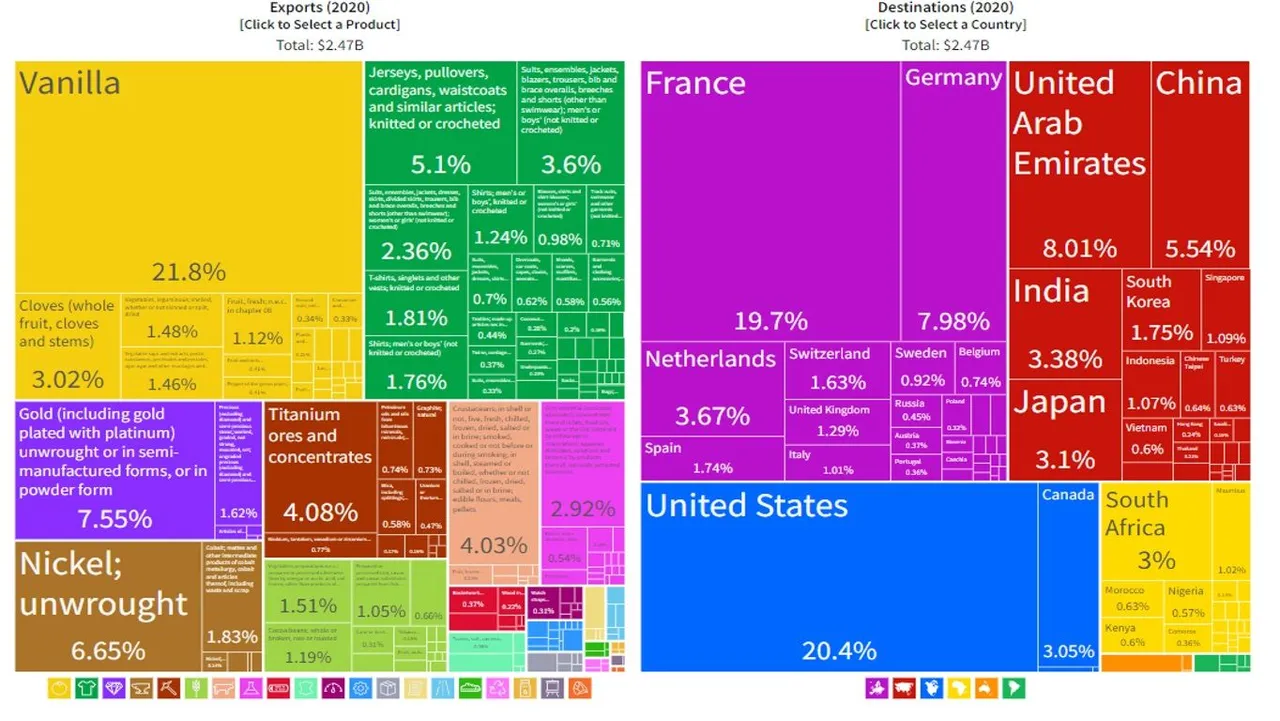
Source: OEC World
Figure 5: Burundi Exports

Source: OEC World
Figure 6: Malawi Exports
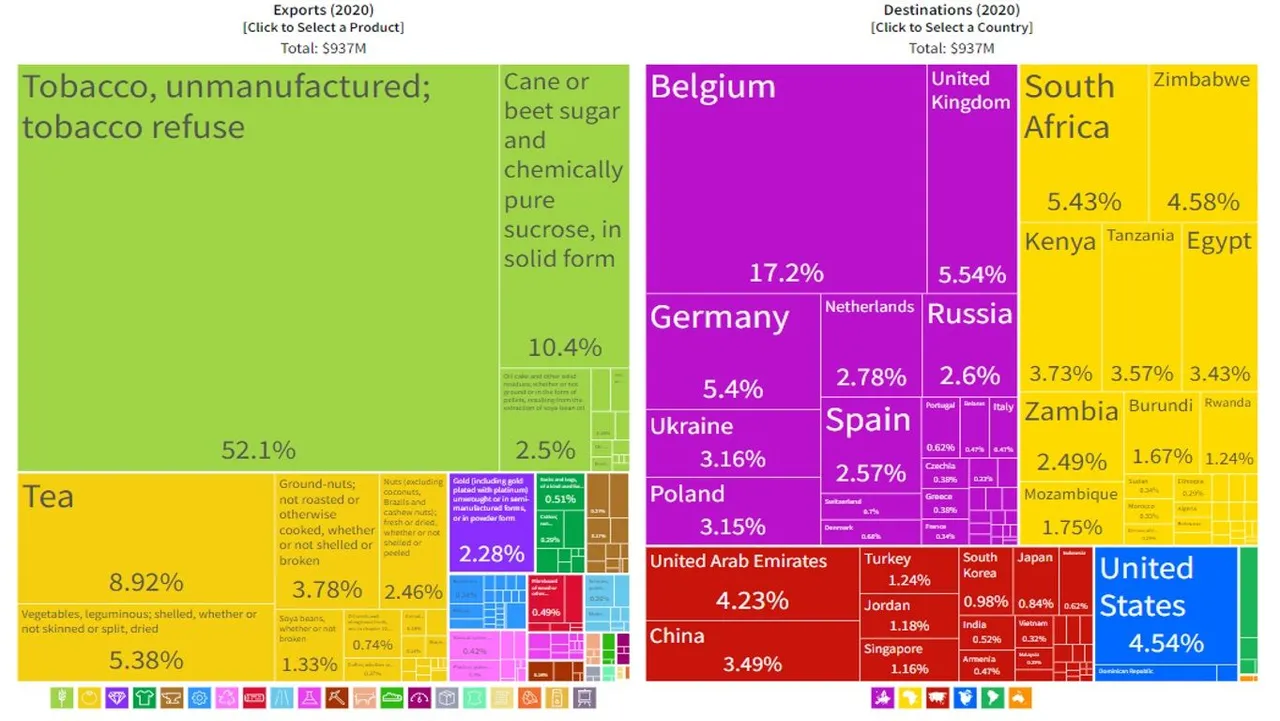
Source: OEC World
Figure 7: Guinea-Bissau Exports
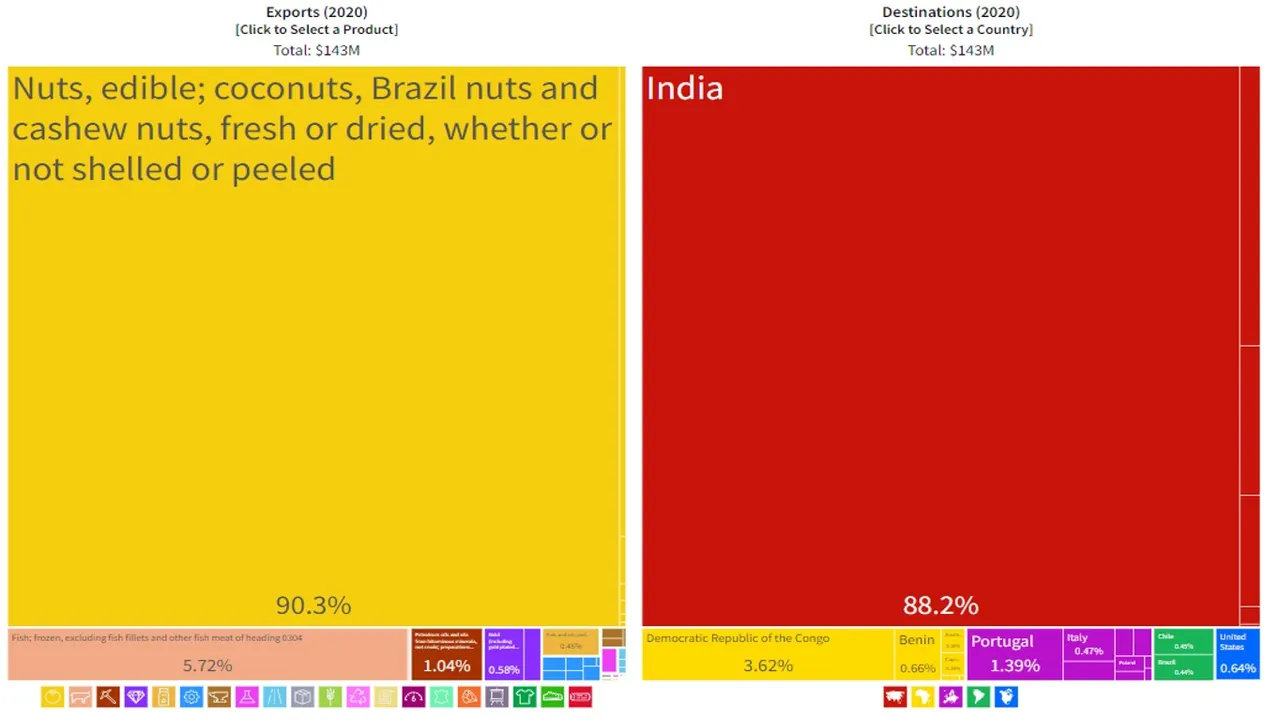
Source: OEC World
Figure 8: Central African Republic Exports
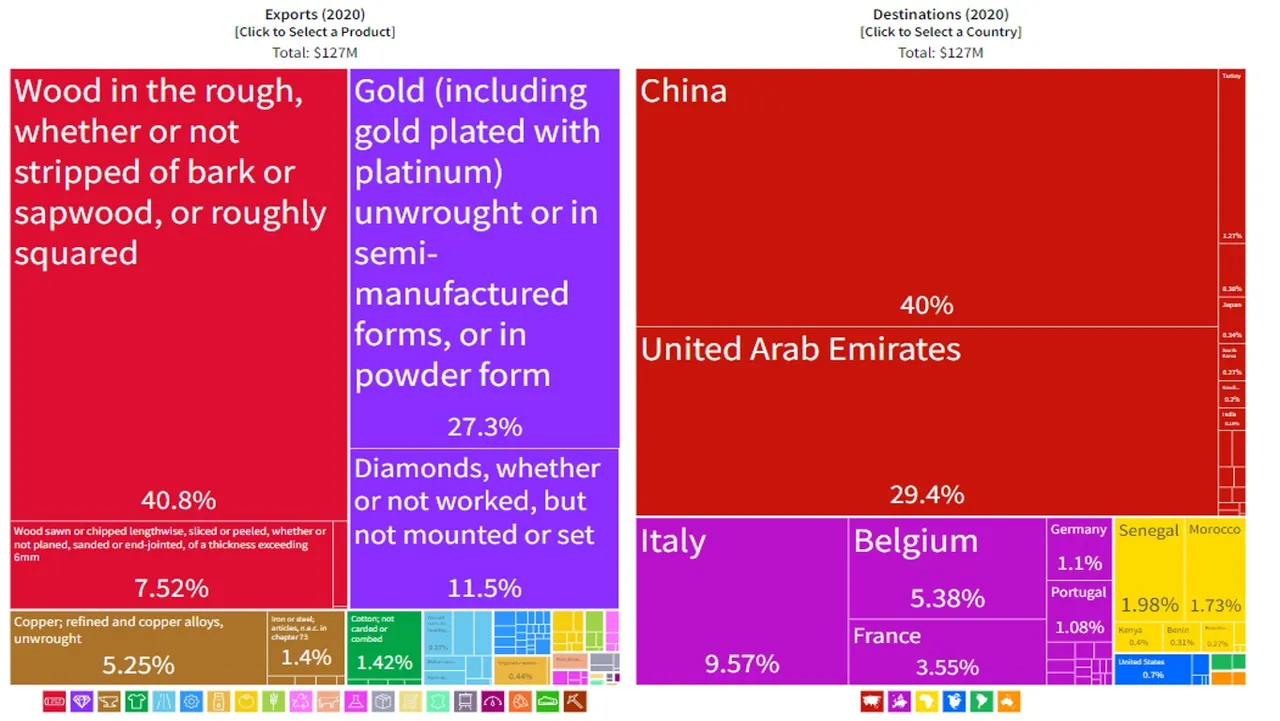
Source: OEC World
Figure 9: Mozambique Exports
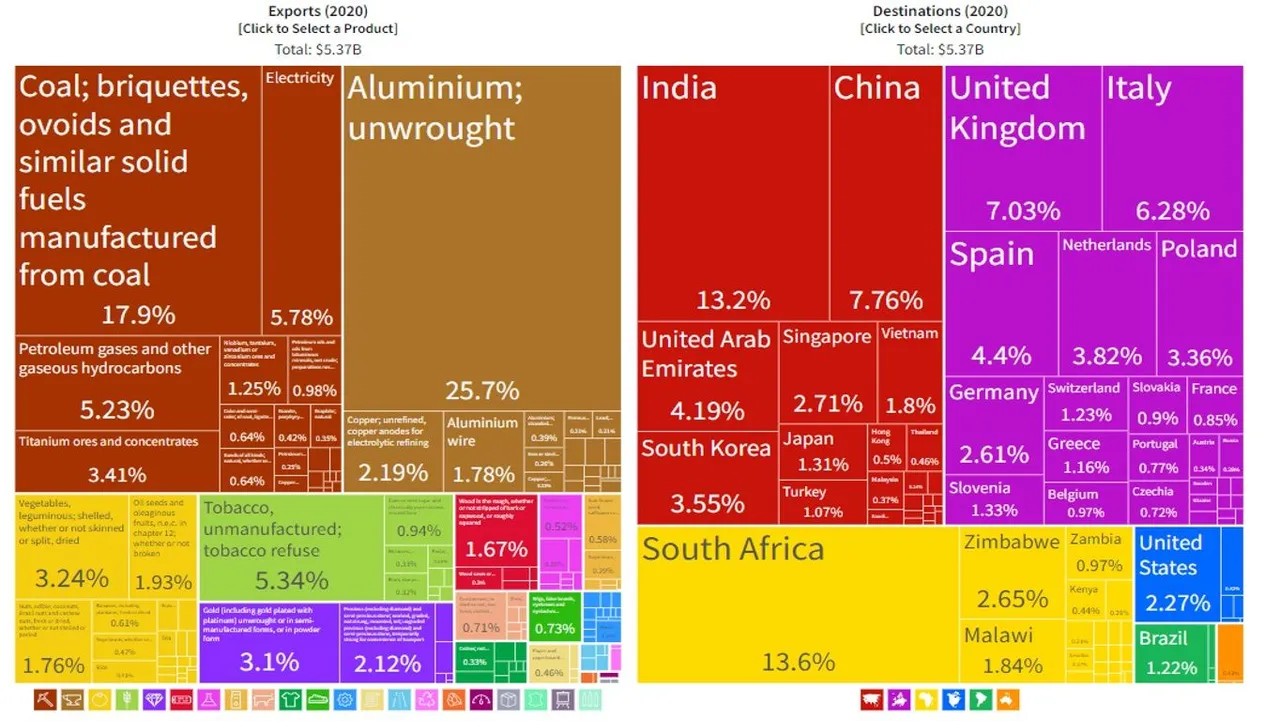
Source: OEC World
Figure 10: Zambia Exports

Source: OEC World
Figure 11: Uzbekistan Exports
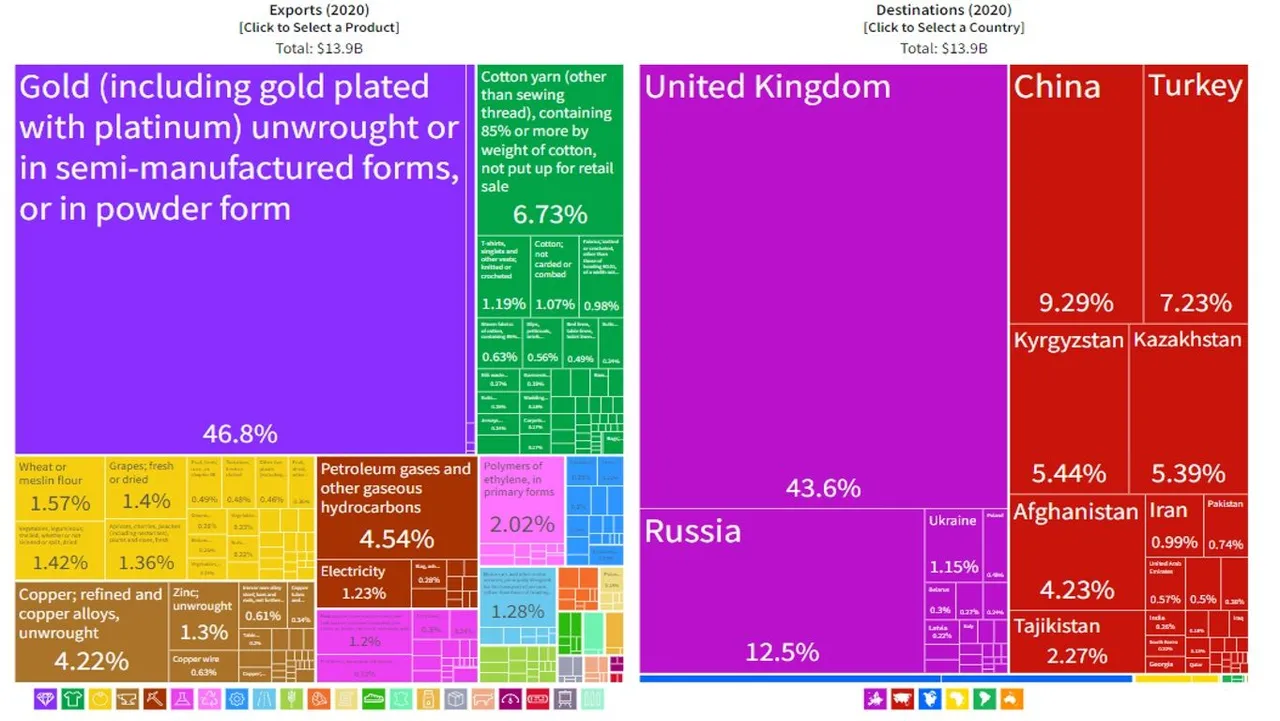
Source: OEC World
Figure 12: Rwanda Exports

Source: OEC World
Figure 13: Angola Exports
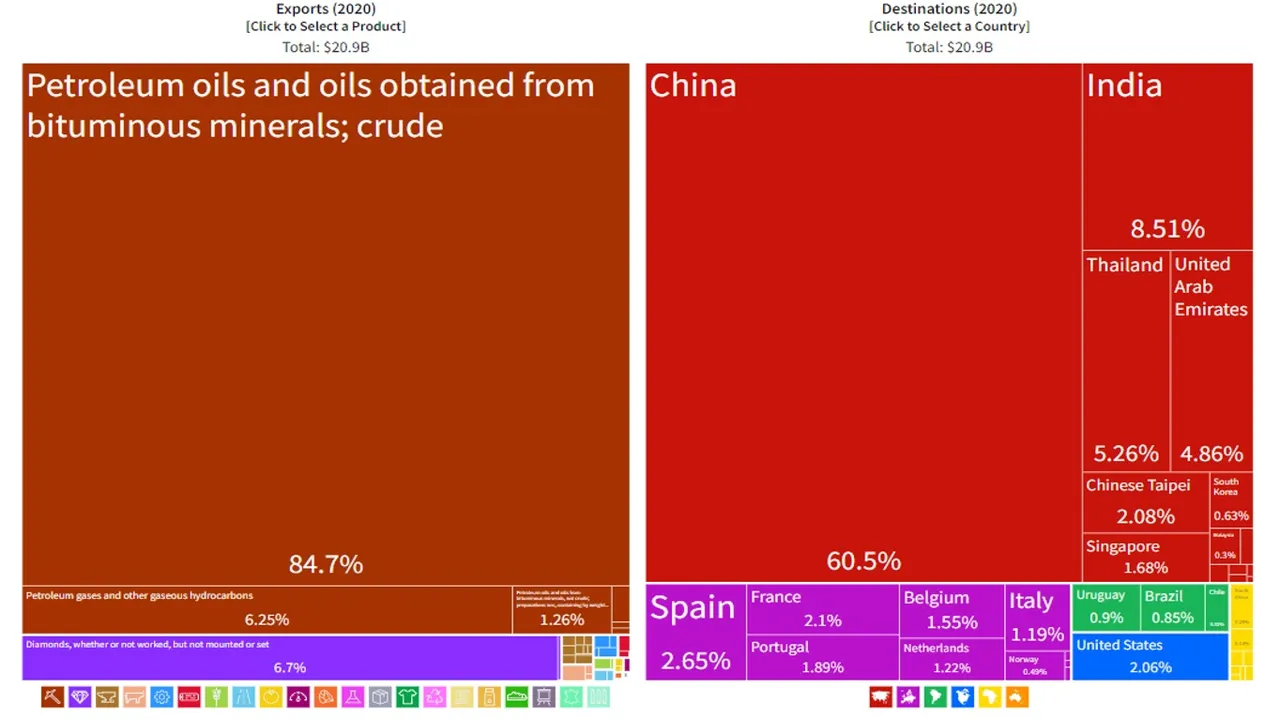
Source: OEC World
Figure 14: Togo Exports
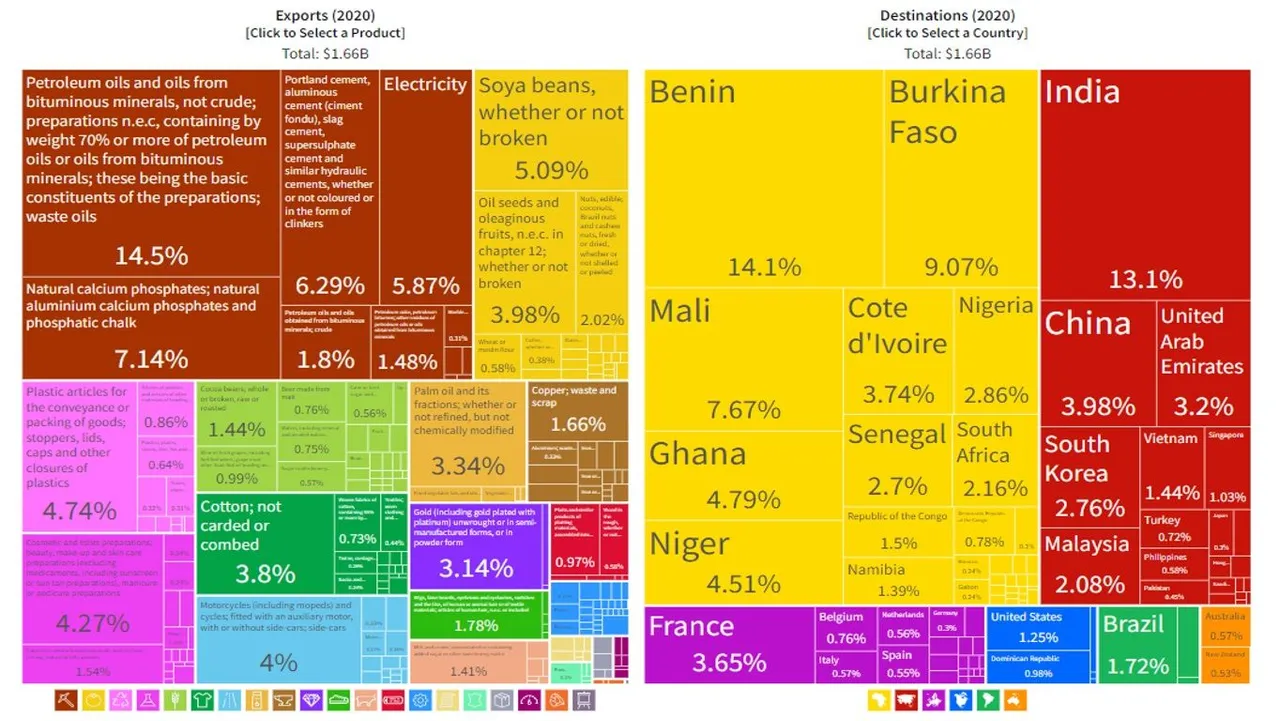
Source: OEC World
The majority of these countries are focused on just one or two goods (i.e. more than 50% of export value). The majority of these countries export the majority of their goods to just a few countries (i.e. less than 5 countries receive more than 50% of exports). The goods exported are mostly raw and unprocessed resources such as oil, metals (Gold and Copper), crops (Tobacco and Vanilla), and timber. The resources are quite valuable but are sold cheaper because they are unprocessed. The importers of these goods have an advantage because of lack of competition. The impact of a major trading partners pulling out would be devastating to these countries' economies. Trading partners are able to put pressure on the price of goods as well as push down the cost of labour (wages).
Richer countries such as USA, UAE, China, and several European countries have greatly benefited from trade and extraction of resources from African countries.
Madagascar’s largest export is vanilla. US and Madagascan families own the Madagasdcar Vanilla Company. It dominates the vanilla industry in Madagascar. However, the industry is highly exploitative of the Madagascan workforce (e.g. employ children and offer very low wages) (Guardian). Madagascar is rich in mineral deposits. International companies such as Rio Tinto have gained access to these resources. It is unclear what Madagascar are receiving in return other than employment and low wages (World Atlas).
Congo, D.R. mostly export oil and copper. Mining (China’s African Impact) and oil extraction (International BusinessTimes) is dominated by Chinese companies. Working conditions are bad and wages are low.
Malawi mostly exports tobacco. The industry has many small growers of tobacco but only two main global leaf buyers (Alliance One International and Universal Corporation). They sell the leaves to the major cigarette companies such as British American Tobacco, Imperial Tobacco, Japan Tobacco and Philip Morris International. The growers barely make enough money to survive while the big companies are very profitable. Much of the tobacco exported from Malawi goes to European Union countries (e.g. Belgium 17.2% and Germany 5.4%). The EU are threatening to ban Malawi tobacco imports (Face of Malawi). Losing such a large market puts the industry in jeopardy and thousands of jobs with it.
Guinea-Bissau’s exports are made up almost entirely of nuts. They are sold almost exclusively to India. A large proportion of those nuts (drupes) are cashews. These nuts are sold cheaply because they have not been shelled, which is done in India (UNCTAD). The combination of not adding value by deshelling the cashews and relying on a single export to a single exporting country diminishes Guinea-Bissau’s return on its assets. They are also vulnerable to world demand, weather and climate, and India’s willingness to keep buying their nuts.
Central African Republic mostly exports wood, gold and diamonds. These are very high value exports but the people of Central African Republic do not appear to benefit much from selling it. China buys a large proportion of Central African Republic’s timber. In doing so, they have been funding rebel and militia groups, which has continued to fuel their internal conflicts (The Guardian). Chinese companies are invested in mining gold and diamonds in the Central African Republic. Their progress is hindered by frequent conflicts (ABC News).
Mozambique mostly exports aluminium and coal. Mining is dominated by multi-national companies; one such company is Mozal Aluminium. The company promotes its contributions to Mozambique such as building schools and supporting small businesses (South 32). Mining aluminium in Mozambique is very profitable. It appears that the local people receive very little of that profit in terms of profit share or wages (The Guardian).
Zambia mostly exports copper. Mining in Zambia is dominated by four large firms (Barrick Lumwana, FQM Kansanshi, Mopani and KCM (Konkola Copper Mines). Barrick Lumwana is a Canadian company and the other three are owned in part by the Zambian Government and foreign companies (Canadian and Swiss) (Mining for Zambia). The copper is mostly transported by Swiss companies (Cambridge). International companies appear to profit considerably more than the local people.
China is heavily involved in resource extraction and mining in many place in Africa. See Figure 14 below.
Figure 14: China’s Energy Footprint in Africa - 2009
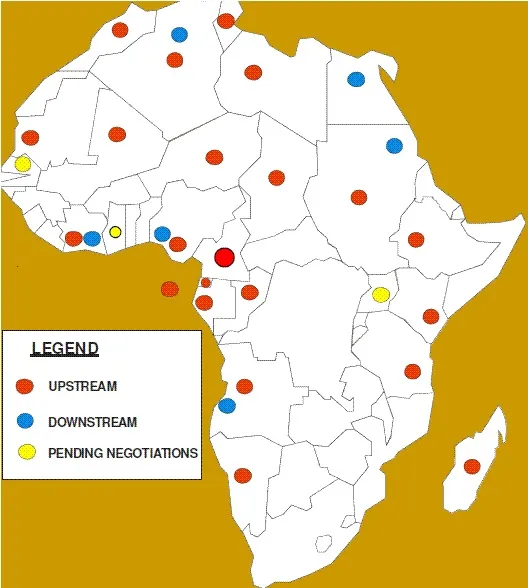
Source: IDE-JETRO
Angola is one of those countries. About 90% of Angola’s exports are related to oil. China is by far the largest market for this oil (over 60% of exports go to China). Initially, China bought oil directly from Angola but eventually Chinese companies such as Sinopec became involved in extracting and refining oil. In 2006, Angola became China’s largest provider of oil (IDE-JETRO).
For many countries in Africa, gold is a natural resource. This attracts buyers and/or foreign investment. United Arab Emirates (UAE) have taken an interest in obtaining gold from Africa. From our list of poorest countries, UAE buy substantial quantities of gold from Burundi, Central African Republic, and Rwanda. UAE take advantage of countries with little to no regulation (e.g. can use child labour) and mining relies mostly on labour rather than technology (Carnegie Endowment).
Togo offers a wider and more diverse variety of goods for export than the other African countries discussed. They also trade with more countries and are less dependent on any one country for any particular export. However, Togo relies heavily on trade from other African countries. They do not engage in much trade with wealthier nations in Europe or with the USA. Therefore, they are limited by their neighbours’ growth and wealth.
Uzbekistan, the only one of the countries on the list not located in Africa, relies heavily on the export of gold. They mostly trade with Russia, United Kingdom, China, and Turkey. Gold mining is mostly conducted by State owned companies and are seeking foreign investment (Resource World). In terms of trade, Uzbekistan appears to be in a better position for success as they are less vulnerable to large international companies exploiting their people. However, lack of successful entrepreneurs might be a problem.
Production in these countries is focused towards providing goods for exports. Therefore, goods and services within their own countries are neglected. They need to rely heavily on imports for many of their basic needs and wants. This adds to their dependence on other countries as well as weakens their position to trade with them. The low income of their populations reduce their ability to fulfil their needs and wants; thus, deepening the extent of their poverty. All import data is available on OEC.
Size
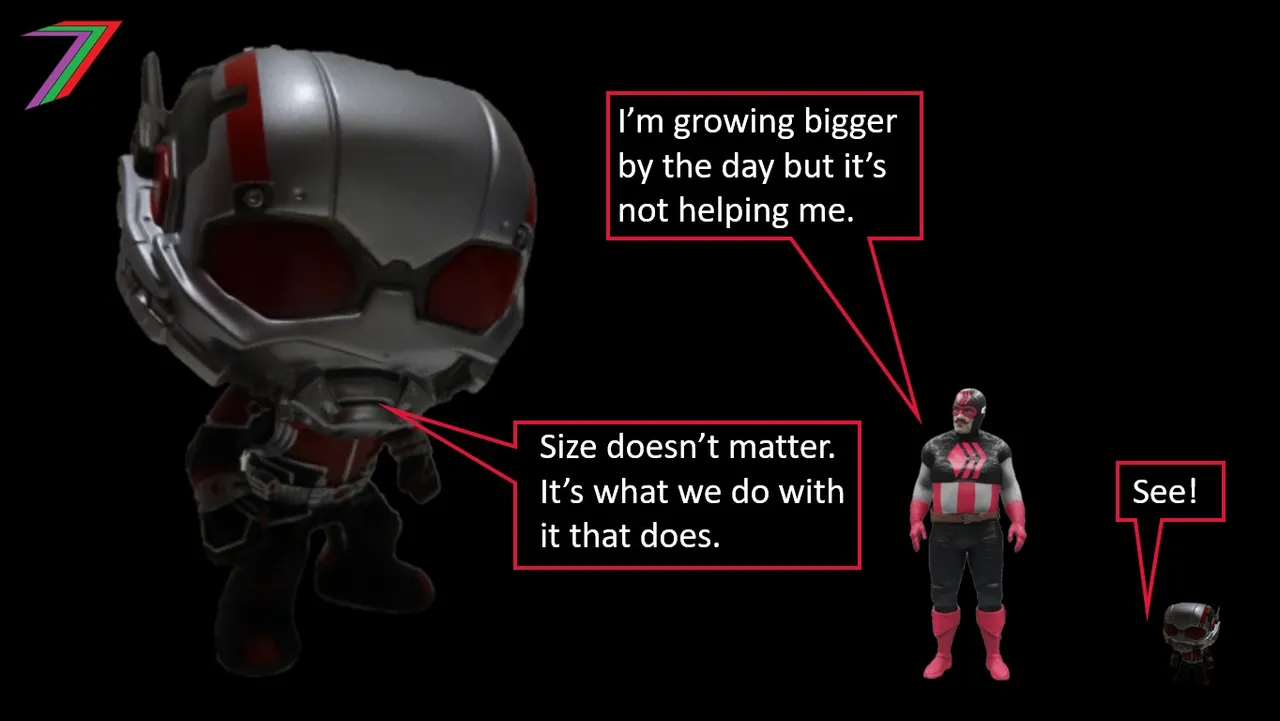
Size could be measured in landmass or population. Size has advantages and disadvantages. Size often enables a country to be more self-sufficient. In regards to larger landmass, it may have access to more natural resources. This increases the potential for agriculture, mining, forestry, oil extraction, etc. The landmass caters for growth of industries, this could be based on resources obtained locally or imported. In regards to population, having more people is likely to lead to a greater diversity of talent and culture. Diversity of skills enables a diversity of outputs. It may spark greater creativity and innovation. Diversity of culture enables a diversity of practices and ideas. This could also lead to greater creativity and innovation but in different ways.
Size also has its disadvantages. In regards to larger landmass, infrastructure costs are likely to be higher as a larger country needs to be connected (e.g. transport, energy, water, telecommunications, internet, etc.). To provide adequate services to all, costs of providing social infrastructure such as healthcare and education will be more expensive. In regards to a larger population, there could be a strain on resources to cater for everyone. This is particularly true if landmass and other available resources are insufficient to cater for the population size (e.g. overpopulation). Diversity of cultures could cause conflicts between groups with radically opposing ideologies.
The twelve countries vary considerably in size in terms of both landmass and population. Democratic Republic of Congo has the largest landmass and population and is growing rapidly. Guinea-Bissau has the smallest population and Rwanda has the smallest landmass. Table 3 contains population and landmass data.
Table 3: Size of countries (Population & Landmass)
| Country | Population | Growth | Landmass (km2 |
|---|---|---|---|
| Congo, D.R. | 95,394,716 | 3.19% | 2,344,858 |
| Madagascar | 29,180,129 | 2.67% | 587,041 |
| Burundi | 12,625,850 | 3.12% | 27,834 |
| Malawi | 20,182,296 | 2.69% | 118,484 |
| Guinea-Bissau | 2,063,498 | 2.45% | 36,125 |
| Central African Republic | 5,016,938 | 1.77% | 622,984 |
| Mozambique | 33,091,994 | 2.92% | 801,590 |
| Zambia | 19,471,741 | 2.93% | 752,614 |
| Uzbekistan | 34,383,304 | 1.47% | 447,400 |
| Rwanda | 13,601,349 | 2.57% | 26,338 |
| Angola | 35,030,357 | 3.27% | 1,246,700 |
| Togo | 8,681,393 | 2.43% | 56,785 |
Sources: Population and Growth (World Population Review) and Landmass (World Population Review)
Size appears to play a minimal role in contributing to these countries poverty. Some of the countries such as Rwanda may have populations that are too large for their land to sustain.
A noticeable similarity between most of these countries is the very high population growth rate (above 2% for ten countries and above 3% for three countries). It is likely that most of these countries are struggling to cope with the increases, since high birth rates are the main contributing factor. These countries have a disproportionate number of children. Children are unable to contribute as much as adults while also requiring care and education. Forcing children into the workforce is also a form of abuse which may cause them permanent harm. Table 4 contains the estimated percentage of children working as well as the average weekly hours.
Table 4: Child Labour Statistics
| Country | Data Year | Percent of Children | Avg. Hours |
|---|---|---|---|
| Angola | 2001 | 30% | 12.5 |
| Burundi | 2010 | 32% | 12.1 |
| Central African Republic | 2010 | 37% | 15.7 |
| Congo, Dem. Rep. | 2014, 2012 | 41% | 7.3 |
| Guinea-Bissau | 2014 | 64% | 5.8 |
| Madagascar | 2007 | 26% | 17.6 |
| Malawi | 2015 | 49% | 10.8 |
| Mozambique | 2008 | 27% | 12.9 |
| Rwanda | 2014 | 6% | 11.8 |
| Togo | 2014 | 35% | 8.1 |
| Uzbekistan | 2005 | No Data | 4.2 |
| Zambia | 2008 | 34% | 4.2 |
Sources: Percent of children working between the ages 5 to 14 (Nation Master) and Weekly Hours (Our World in Data)
Geographical location
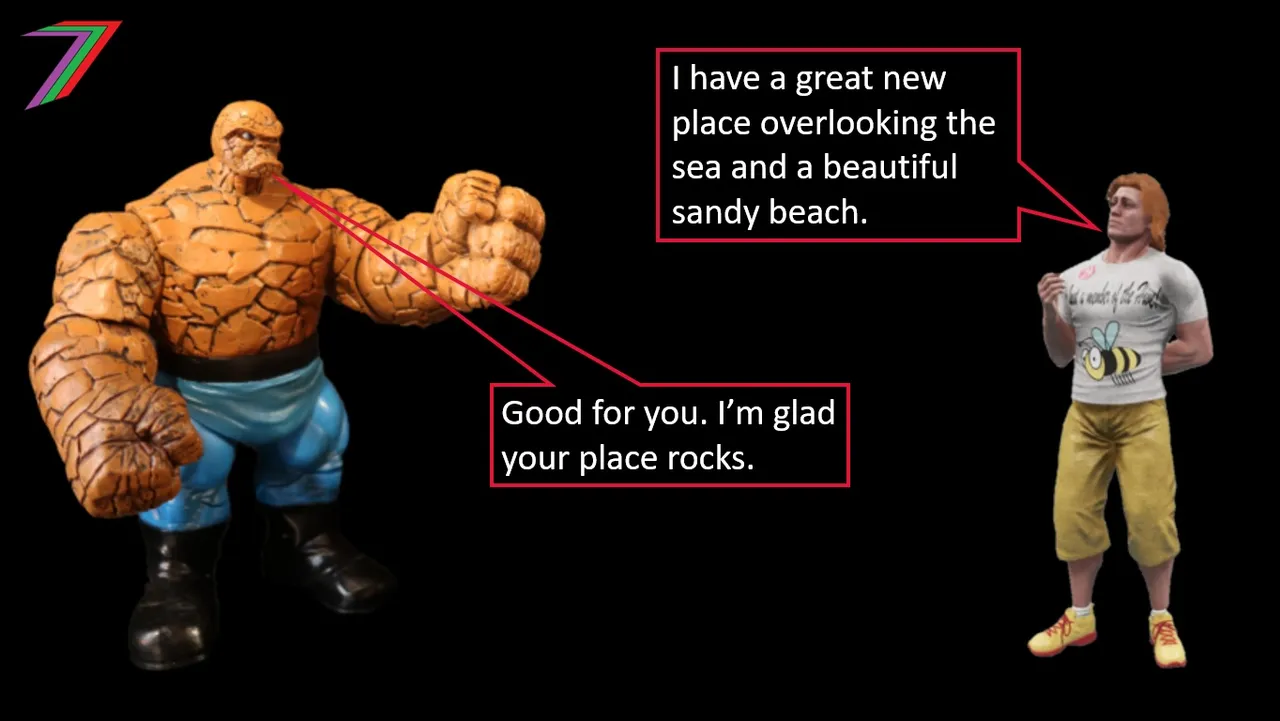
The geography of a country may have characteristics that offer many advantages. They can naturally improve opportunities for trade, agriculture, tourism, infrastructure building, and business growth. Some of these characteristics and advantages could include:
- Coastlines offering access to natural resources of the seas, coastal trade routes, deep waters for ports, and security.
- A location near to wealthy neighbours offers better trade prospects.
- Climate with stable weather conditions (e.g. not too hot, cold, wet, dry, or stormy).
- Flat usable land (e.g. not restricted by vastly uneven or arid terrain).
- Natural wonders (e.g. waterfalls or rock formations) or attractive natural features (e.g. sandy beaches, interesting and unique wildlife, and hot springs).
Eight of the twelve poorest countries in the world are located within close proximity to each other. They are located in and around southern and central parts of Africa. See Figure 15 below.
Figure 15: Geographical locations of the twelve countries
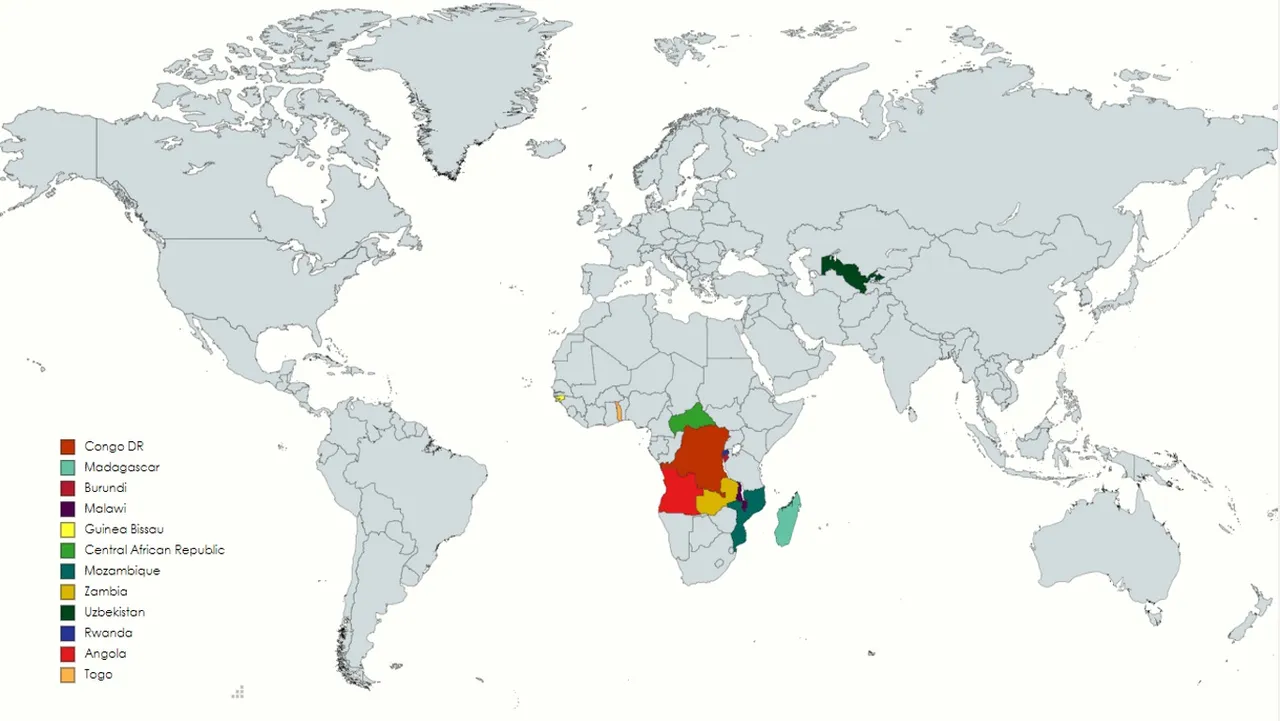
Source: Map Chart
The climate for most of these countries is tropical. Seven of these countries are landlocked and only three have significantly long coastlines (Angola, Mozambique, and Madagascar). The most likely biggest disadvantage for most of these countries geographical location is their distance from wealthier nations and their close proximity to mostly poor nations. Madagascar may have the most favourable location. It is an island with access to the Indian Ocean and has potential sea routes to Asia.
Natural Resources

Natural resources are essential building blocks for goods and usually play an important role for service sectors. A country naturally endowed with valuable resources should have a strong advantage over countries that are less endowed. It has value that just needs to be extracted from the environment. However, extraction of resources can be costly. It may require many hours of labour or the acquisition of expensive machines to improve efficiency. If a country has acquired wealth, it will be able to invest in the necessary machinery to extract resources at a low long-run cost. This country could have the wealth and skilled labour force to process the extracted natural resources so that it can become usable; thus adding extra value and income. Countries with very little wealth may not be able to acquire the machinery. Therefore, they will need to rely on manual labour, which is very inefficient or rely on foreign companies to provide the machinery and other investment and the people of the country become their employees.
Culture and Religion
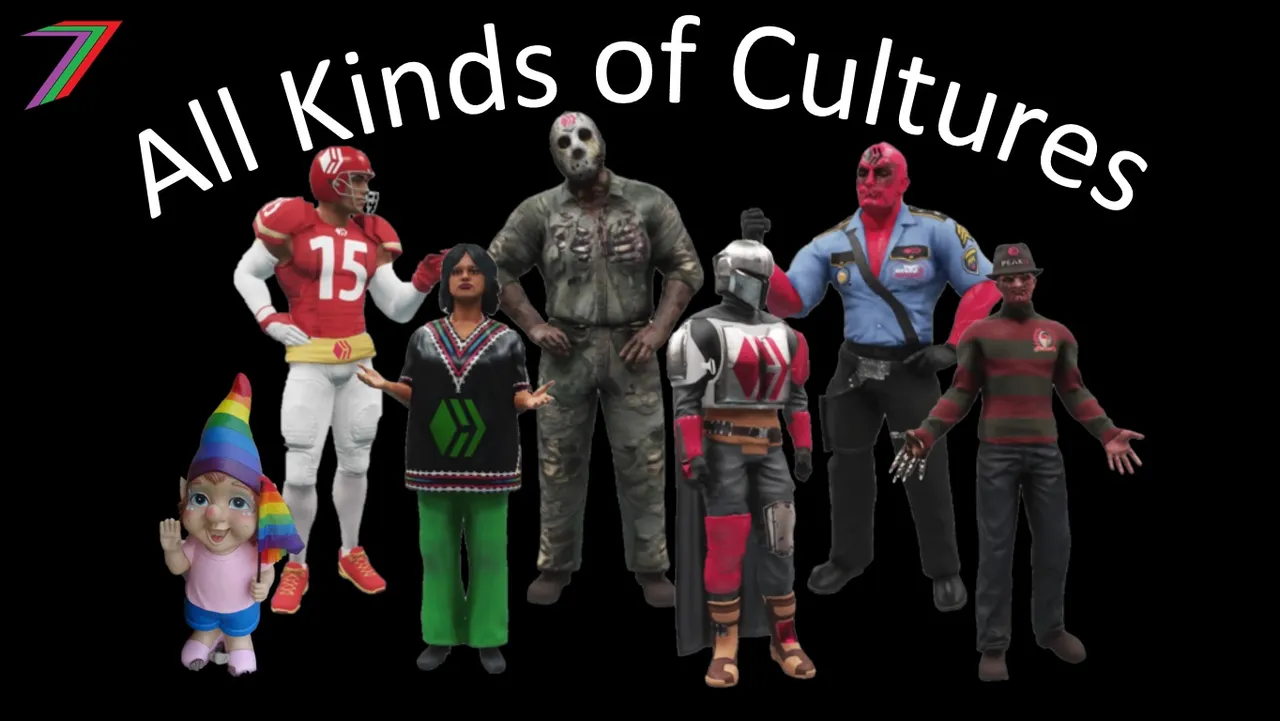
Culture and religion strongly influences people’s perceptions, ideology, relationships, and actions. Culture can drive people towards innovation and creativity or it could push them towards compliance and subjugation. Most people are exposed to their culture at a very young age. It shapes what they work for and inspire to do and to be as they get older. This is reinforced by family, teachers, religious leaders, and even Government. Cultures that value individual freedoms and success often inspire people to be successful. Cultures that value community success over individual success may become suppressive of individuals. This is not because valuing the community is bad but because of the way most communities are structured. They are often focused around a few people. Supporting the community is manipulated to become servitude to the few people and results in minimal benefit to the community.
Most of the twelve countries are predominantly Christian with the exception of Uzbekistan (predominantly Muslim). See Figure 16 below for a world map of Christian countries.
Figure 16: Countries with populations that follow a Christian religion

Source: Wikipedia
Most of these countries have a high percentage of Catholic Christians. Many of these countries are former Belgium and Portuguese colonies. Belgium and Portugal spread their religion (i.e. Catholicism), language and culture to their colonies. Zambia is a former British colony, they have a higher percentage of Protestant Christians and English is their official language.
Figure 17: Countries with populations that follow Catholicism
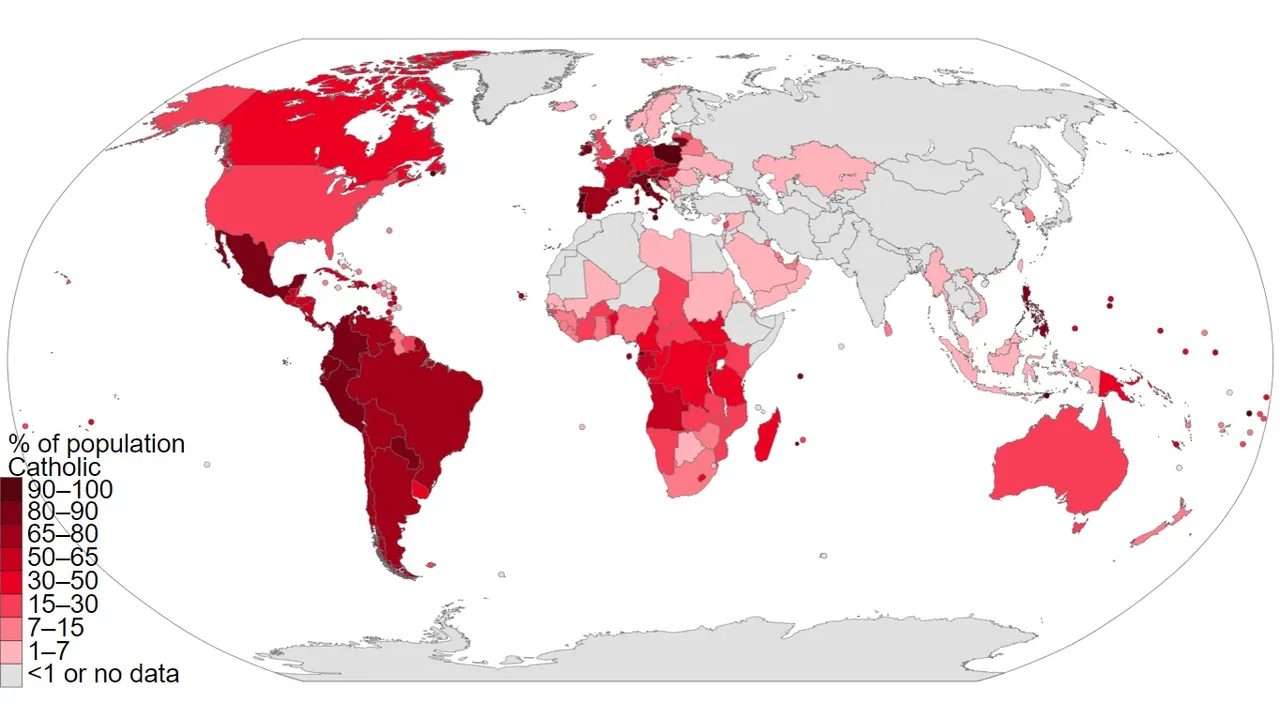
Source: Wikipedia
History

A country’s history influences how it is perceived by its own people as well as people from other countries. History can inspire its people to succeed as it offers a sense of pride and a desire to relive past successes. History can provide greater opportunities for success as it may form a foundation for good relations with other countries. These could be political, economic, or cultural relationships. People are also attracted to countries with long and interesting histories. They are attracted by the atmosphere, the landmarks, direct engagement in the culture and traditions. People might visit as tourists or desire to relocate permanently. Both of these are advantageous to the country.
History may also work against a country if it is deemed as being strongly negative and is perceived to be an existing blemish on a country. A country may have a history of wars, civil unrest, dictatorships, and corruption. This may no longer be the case now but the memory of these events, especially if they are recent, give rise for concern that such problems will reoccur or still exist beneath the surface. This could form a hindrance to migration, trade, and relations with other countries. Long histories of conflicts between countries is often difficult for people to ignore. These may negatively affect relationships between the people of these countries for generations after the last conflict.
Many African countries have histories plagued with civil wars and internal unrest. Growth has been greatly hindered by fighting and corruption. Most African countries were colonies of European nations. Some of these countries gained independence through uprising (e.g. many former Portuguese colonies) and others more peacefully. An uprising is more likely to permanently harm the relationship between the former colony and the European power. For most of the nations discussed, trade appears limited with the former ruling nation.
My Opinions

There are many possible reasons that these are the poorest countries in the world. Geographical location, culture, and history play some role in this for several of these countries. However, I believe the evidence suggests that Governments and how they engage in international trade is hurting them the most. Governments are unstable and most likely corrupt. Facts Institute has an index for measuring corruption. In 2021, the average for the African Union was 33/100. Using the same index, the average for the 12 countries discussed in this post is 28.6/100. The corruption holds back economic growth and prosperity, as leaders are more focused on catering for their own needs and the needs of the their closest allies.
Leaders and businesses from other countries take advantage of this corruption. They know they only need to please a few people in positions of power to gain access to abundance of resources and very low cost labour. These leaders and businesses often add to existing conflicts and corruption by increasing the wealth of corrupt leaders and rebel groups. Division and conflict provides them with greater opportunity to profit. Some western countries try to avoid tainting their reputation by trading with countries and companies (e.g. China and Chinese companies) that have exploited these countries directly. Figure 18 contains information about China’s exports. The USA are the biggest importer of Chinese goods.
Figure 18: China’s Exports

Source: OEC World
Once a large foreign company becomes entrenched (i.e. contributes greatly to export value and employs a large portion of the population), they are very difficult to remove. Their presence might be a major cause of the country’s poverty but the immediate impact of them leaving would be catastrophic to the country. Africa’s wealth of natural resources is working against them. The wealth is being transferred to the few and in the process, the people face more exploitation than if these resources had not existed.
The path out of poverty for many of these countries will be very difficult. I believe change needs to begin from within. This would involve reducing corruption and instability. Initially, strong leaders would be required to make difficult decisions that will initially harm the country (e.g. breaking ties with companies exploiting the country’s resources and people). After that, power needs to return to the people to begin fresh. This should enable the growth of local entrepreneurs and small businesses. In many of these countries, the people's desire to succeed is not lacking (CNN). Ideally, at the same time, changes need to occur in neighbouring countries so that they can offer each other support.
Only reform from within will not be enough. People in wealthy countries need to stand up against their Governments and Big Business. As discussed in many of my posts, they need to do this for themselves. The changes made will eventually filter to the poorest countries, making their path out of poverty easier.
More posts

If you want to read any of my other posts, you can click on the links below. These links will lead you to posts containing my collection of works. These 'Collection of Works' posts have been updated to contain links to the Hive versions of my posts.
Hive: Future of Social Media

Spectrumecons on the Hive blockchain
